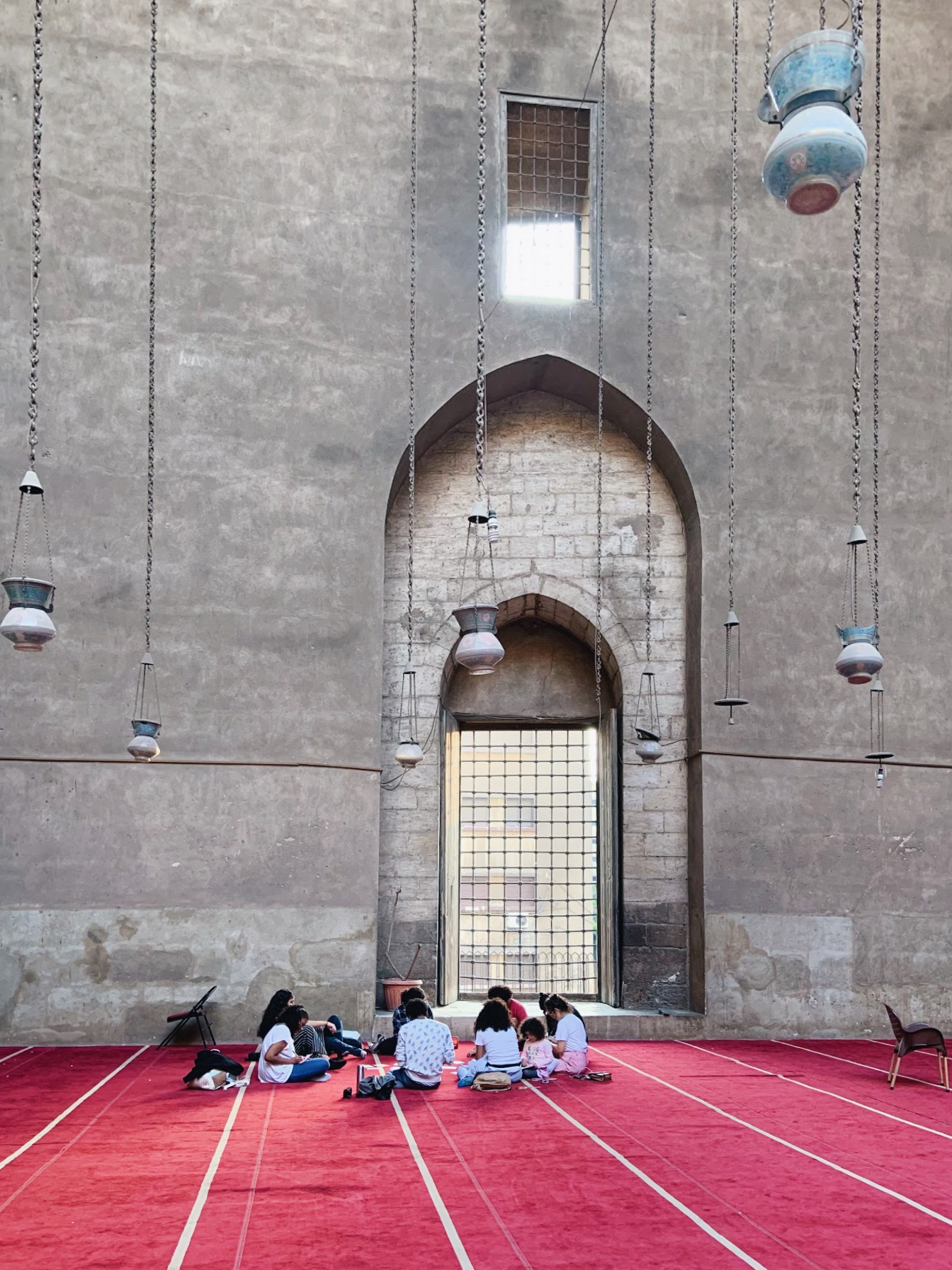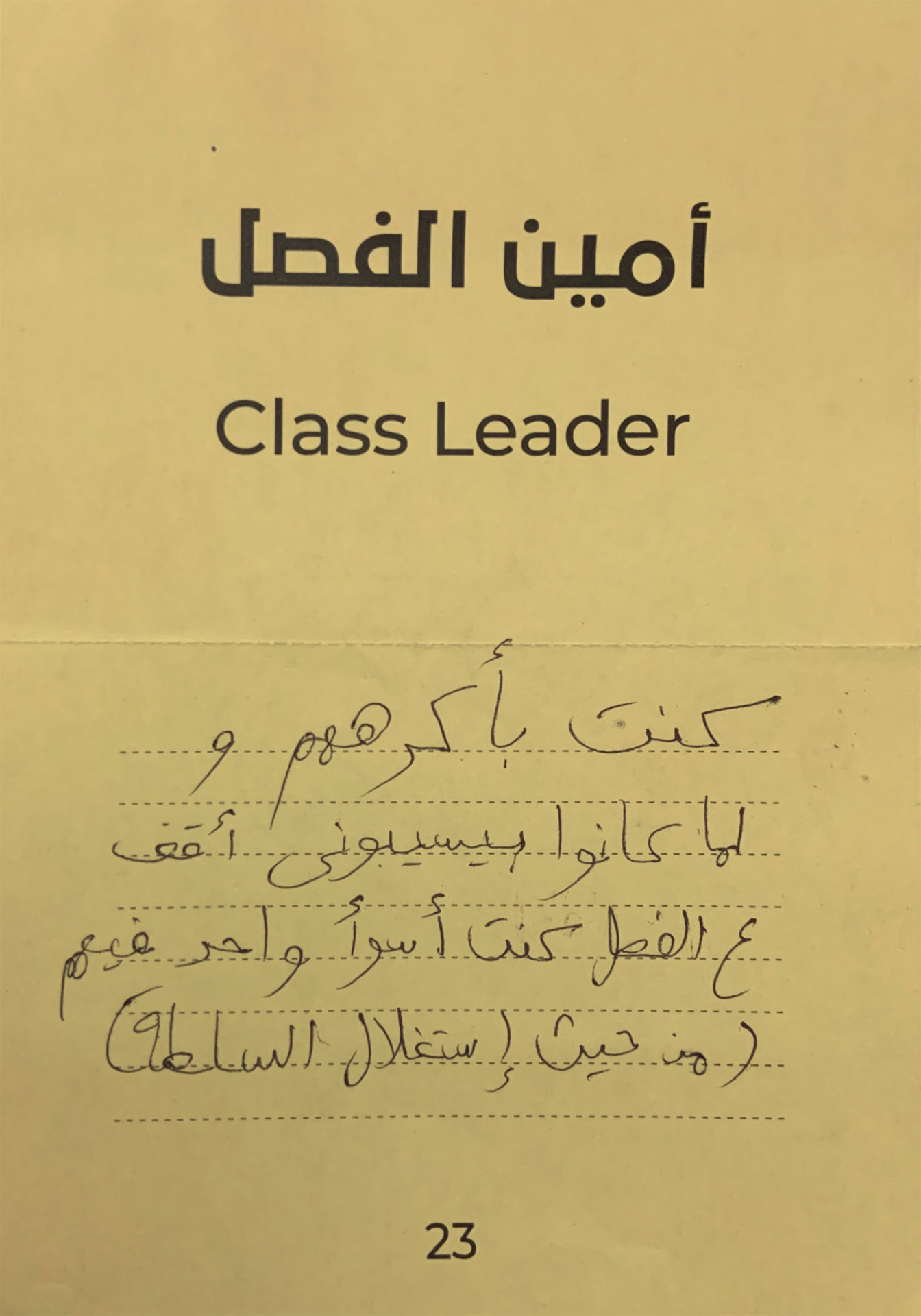2019/ Room
︎ Mosque-Madrassa of Sultan Hassan
“The Field Trip” is a room resembling a one-day school that moved around different spaces of learning until finally closing down for the day. It started at the Mosque-Madrassa of Sultan Hassan, then later moved to the balcony of Lala Studio (Al Qalam Foundation) that still overlooked the mosque, and finally settled in Cairo Institute of Liberal Arts.
The Mosque-Madrassa of Sultan Hassan is a monumental complex encompassing a mosque, mausoleum, hospital, school and dormitory. You enter the building through passageways, narrow and dark, that lead to a quiet, open courtyard with a fountain and a basin in the middle. Passing through this dramatic change of light, sound, and scenery puts one in a state of serenity and spiritual cleansing. Four massive iwans with worn out stone walls tower over the sides of the courtyard. They used to house four different schools of thought over 650 years ago.
We sat in one of the iwans, forming a circle on the red carpet on the ground, close to one of the big windows. Tens of glass lanterns dangled from the ceiling high up, and, save for a few empty chairs around us, the space was empty. When one of the security guards came calling to announce the closing hour, we moved to the building right across the street. We went up one floor into La La Studio (Al Qalam Foundation), where we were offered their balcony, and a cup of coffee or tea. We were brought chairs and sat around a small wooden table. The Mosque of Sultan Hassan and its neighbouring Al-Rifa’i Mosque formed a strong presence in the backdrop, and their grandiose stone structures and minarets called for prayer every now and then. We stayed there until the night, and La La Studio’s closing time. We then moved to the opposite apartment, the quarters of Cairo Institute for Liberal Arts. The room where we sat also had bare stone walls and was covered in carpets – mostly red – and hand-woven kilims. It had a table at its center, a blackboard on the left, and a projector. It was full of cushions.
There were fifty two numbered playing cards in “Field Trip,“ each with a keyword and a color code. The cards prompted participants – who were both educators and students – to recall their histories with schools. At the beginning, the cards were placed face down, and each of us picked out at least one card from each color. We had to respond to the keywords with a question, a short story, a memory or an opinion. We took turns around the circle to read aloud what was written. Each response invited others to build on it and share their own experiences with education and spaces of learning, the social relations they foster, or with the various activities that took place at school.
Keywords on the cards included: Classroom, Playground, Cantine, Art Room, Morning Assembly, Curriculum, Exams, Uniforms, Teachers, Friends, Class Leader, Bullying, Stationery, Book Club, Homework.
This room is part of “Chatrooms: On Curating Spaces” in collaboration with Sarah Maher. The project is supported by Mophradat and the British Council in Cairo. Photos by Mahmoud Khattab, and poster illustrations by Youssef Ayman (YAK Illustrates).






